Our Schools
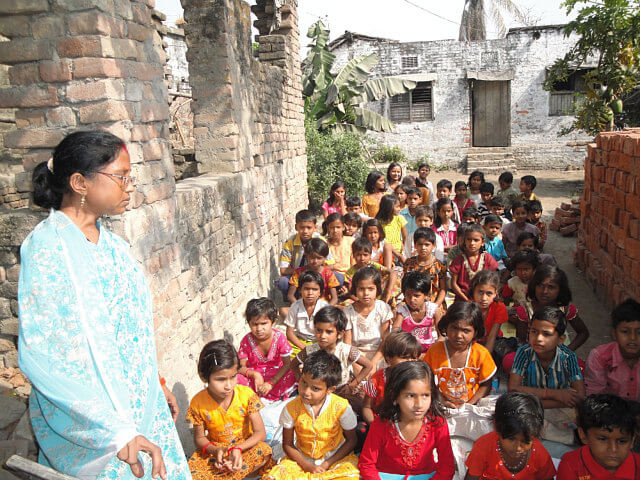
The FreeSchools model is progressive and highly cost-effective
It is school on a shoestring since funds are first allocated to salaries and materials and not infrastructure. We:
- locate schools where the need is greatest
- use mainly donated space
- focus resources on teacher training and salaries
- hold evening classes to avoid conflicts with other responsibilities
- recruit mainly female teachers from the same villages as the children
- provide ongoing teacher training and supervision
- ensure respect for all religions with no proselytizing
- give girls priority but not exclusivity
- provide a basic primary curriculum
- encourage students to continue education in government schools
- provide modest scholarships for exceptional students
- provide learning materials
How We Measure Success
Rigorous records are kept by teachers to track student progress. The following are indicators of success:
- older children volunteer to teach the younger ones
- cultural programs are created to showcase natural talents
- students enroll in government schools for higher learning
- former students become FreeSchools teachers
- exploitation and human trafficking is reduced
- parents show support by getting involved
- parents want education for themselves
- villagers build a dedicated FreeSchool
- the demand for a FreeSchool spreads to other villages

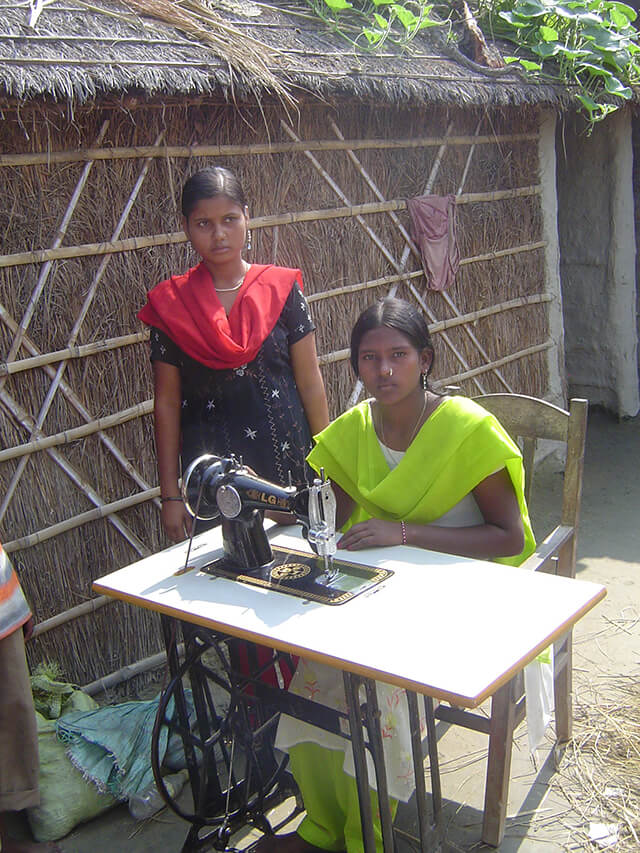
Typical Freeschools
We have 23 schools in Bihar. Most of our programs are located in villages where electricity is irregular or non-existent, books are rare and literacy is nominal. We offer a basic, primary education for two hours daily that includes reading, writing, arithmetic, health/hygiene and general knowledge (social studies), with the goal to prepare students to enter and succeed in the government schools.
Sadly, for many parents the cost of sending a child to school, the uniforms, books, and transportation, are beyond their reach. We provide modest scholarships for children of promise.
Women's Empowerment Centres/Tailoring Centres
This two year program concentrates on girls age 12-16 years and young mothers. In addition to basic literacy the students also learn embroidery and sewing skills using manual and treadle sewing machines. It is our goal to open tailoring centres in 50% of our FreeSchools in India.
Why focus on girls?
For a long time, girls have missed out on education. We give them priority but not at the expense of boys. Although girls assume domestic responsibilities at an early age, we persuade parents to permit their daughters to attend school later in the day. We explain that educating their daughters is the single best thing they can do for the future welfare of both their family and community.
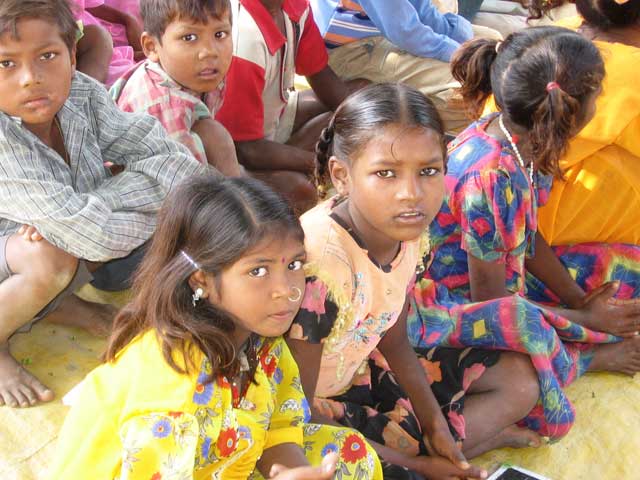
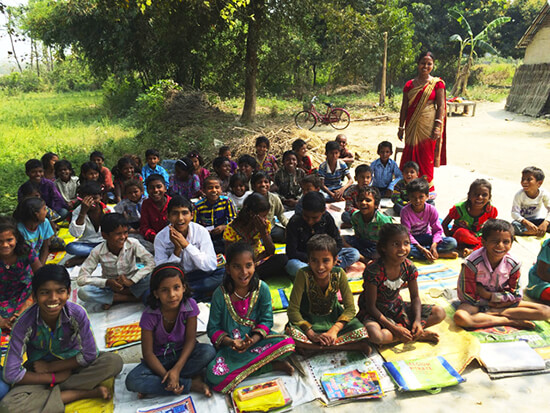
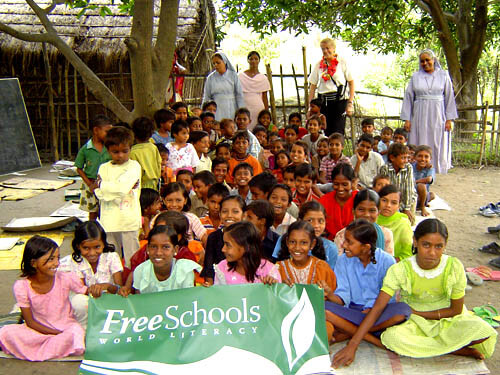
According to studies from the World Bank, educating girls has many benefits:
- Literate girls help to bring better hygiene, health and nutrition to the whole family.
- Literate girls become more valued by their own families and marriage is delayed.
- Each year of schooling can lower child mortality by up to ten percent, and can reduce the number of pregnancies by ten percent.
- The spread of HIV and other diseases is limited. Literate girls and women can access appropriate information to prevent infection.
- Literate girls and women are less vulnerable to human trafficking and the perils of the sex trade.
- Literate girls participate more in decision making at home and in the community.
- Children of literate women are more likely to become educated themselves.
- Literate girls are more employable. Even just one year of primary school can boost income 10% to 20% for women later in life.
Both the United Nations and the World Bank have determined a strong correlation between literacy and social development. The largest benefits to developing countries arise when education is extended to girls. Countries that promote girls' literacy have greater economic development and a higher standard of living.

The FreeSchools model is progressive and highly cost-effective
It is school on a shoestring since funds are first allocated to salaries and materials and not infrastructure. We:
- locate schools where the need is greatest
- use mainly donated space
- focus resources on supervision, teacher training and salaries, and learning materials
- hold late afternoon or classes to avoid conflicts with the students' other responsibilities
- recruit mainly female teachers from the same villages as the children
- give girls priority but not exclusivity
- provide a basic primary curriculum
- encourage students to continue education in government schools
- provide modest scholarships for exceptional students
- ensure respect for all religions with no proselytizing
How We Measure Success
Rigorous records are kept by teachers to track student progress. The following are indicators of success:
- older children volunteer to teach the younger ones
- cultural programs are created to showcase natural talents
- students enroll in government schools for higher learning
- former students become FreeSchools teachers
- exploitation and human trafficking is reduced
- parents show support by getting involved
- parents want education for themselves
- villagers build a dedicated FreeSchool
- the demand for a FreeSchool spreads to other villages
Typical Freeschools
We have 23 schools in Bihar. Most of our programs are located in villages where electricity is irregular or non-existent, books are rare and literacy is nominal. We offer a basic, primary education for two hours daily that includes reading, writing, arithmetic, health/hygiene and general knowledge (social studies), with the goal to prepare students to enter and succeed in the government schools.
Sadly, for many parents the cost of sending a child to school, the uniforms, books, and transportation, are beyond their reach. We provide modest scholarships for children of promise.
Women's Empowerment Centres/Tailoring Centres
This two year program concentrates on girls age 12-16 years and young mothers. In addition to basic literacy the students also learn embroidery and sewing skills using manual and treadle sewing machines. It is our goal to open tailoring centres in 50% of our FreeSchools in India.
A New Model
In 2016 we added a new model to a school located in the town of Sugauli. With a legacy from a friend of FreeSchools, Ellen White, we built a two-room school that offers kindergarten, first-, and second-grade programs. In this community we charge tuition for the morning classes that provide the full Indian standard curriculum. The late afternoon FreeSchool classes operate for three hours daily using the same curriculum and materials as the morning classes. It is hoped this model will be expanded in other towns, where tuition funds will help defray the cost of FreeSchools classes.

Why focus on girls?
For a long time, girls have missed out on education. We give them priority but not at the expense of boys. Although girls assume domestic responsibilities at an early age, we persuade parents to permit their daughters to attend school later in the day. We explain that educating their daughters is the single best thing they can do for the future welfare of both their family and community.
According to studies from the World Bank, educating girls has many benefits:
- Literate girls help to bring better hygiene, health and nutrition to the whole family.
- Literate girls become more valued by their own families and marriage is delayed.
- Each year of schooling can lower child mortality by up to ten percent, and can reduce the number of pregnancies by ten percent.
- The spread of HIV and other diseases is limited. Literate girls and women can access appropriate information to prevent infection.
- Literate girls and women are less vulnerable to human trafficking and the perils of the sex trade.
- Literate girls participate more in decision making at home and in the community.
- Children of literate women are more likely to become educated themselves.
- Literate girls are more employable. Even just one year of primary school can boost income 10% to 20% for women later in life.
Both the United Nations and the World Bank have determined a strong correlation between literacy and social development. The largest benefits to developing countries arise when education is extended to girls. Countries that promote girls' literacy have greater economic development and a higher standard of living.

